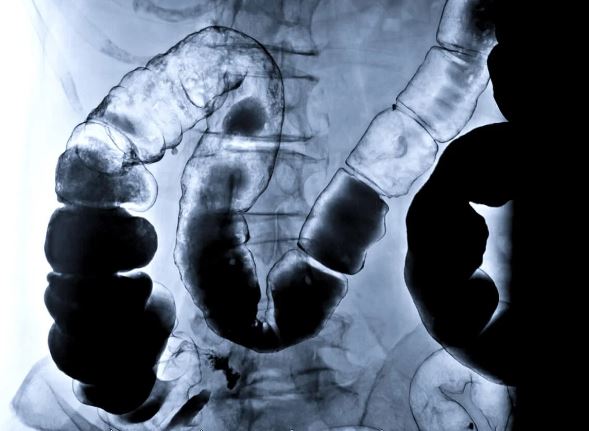While it does not provide a definitive diagnosis, some conditions such as colon cancer or inflammatory bowel disease can be suspected with the barium enema test.

Have you ever heard of the barium enema test? Also known as an “enema colon,” it is performed to aid in the diagnosis of many diseases of the digestive tract, such as colorectal polyposis, cancer, and some abnormalities of inflammatory bowel disease.
In general, it is a test that does not produce adverse effects, although there are a few contraindications that the doctor should assess before performing the procedure. In the next space we will tell you more about the generalities of this technique and the preparation for it.
What is the barium enema test?
The barium enema is a technique to obtain images of the last portions of the digestive tract. It is based on the use of radiography and the administration of a substance known as ‘contrast’, which allows some abnormalities to be visualized in better detail.
Contrast contains barium, so it is important to notify your doctor of any allergies before the procedure. This technique has been in use for many decades, but currently it is not the first option to diagnose certain pathologies. Still, it is still used regularly.

The barium enema test can diagnose some diseases of the digestive tract.
How is the barium enema test performed?
Once the patient has successfully carried out the preparation for the exam (whose steps we will discuss later), it will require the assistance of the radiologist or technician specialized in that area, since the contrast is administered rectally, through a device called a ‘probe’.
It is an elongated, small-caliber and flexible tube through which the barium contrast is instilled. In general, it is a process that takes advantage of the force of gravity to gradually distribute the liquid through the digestive system. The patient must “hold the urge” to evacuate the contrast during the procedure.
When everything is ready, the equipment to take the X-rays will be positioned in the appropriate area and the corresponding images will be taken. The doctor may request some position changes to get better shots.
Who should take this test?
Unlike some laboratory studies, the barium enema test requires a medical indication. Doctors usually request it when there is suspicion of benign or malignant pathologies of the gastrointestinal tract. Some of the most frequent are the following:
Polyps: these are benign tumors whose incidence increases with age. They are associated with abdominal pain and digestive bleeding. In a small proportion of cases, it can increase the risk of developing cancer.
Ulcerative Rectocolitis: This pathology is part of inflammatory bowel disease. It is related to the appearance of ulcers in the last portion of the digestive tract.
Colorectal cancer: despite the usefulness of the barium enema test, an accurate diagnosis requires taking a biopsy of the lesion.
How is the preparation for a barium enema test?
As this procedure can be annoying for many people, doctors usually indicate a previous preparation that covers the previous two or three days. Some of them are the following:
Maintain a soft or liquid diet and limit dairy intake.
Use a laxative.
Go to the appointment in fasting conditions.
Avoid cigarette smoking in the hours prior to the study.
These measures make it possible to reduce the incidence of complications and make the process as hygienic as possible.
What can the results of a barium enema test indicate?
The results of the medical report or the conversation with the specialist may have confused you a bit. The most important thing is to understand that this study only allows obtaining images of variable quality that make it possible to establish a suspicion, but not an accurate diagnosis.
What does this mean? That if the doctor is suspecting a case of rectal cancer, for example, he will later require an endoscopic study that involves a biopsy to obtain the definitive diagnosis. Only this will allow to establish the appropriate treatment in this and other diseases.
Therefore, the results will be indicative and will be based on the anatomical alterations of the digestive system, something that will always be related to the clinical history of each patient.

The results of the barium enema are indicative. If they reflect alterations, the doctor orders other complementary tests to obtain a diagnosis.
Risks and Contraindications of the Barium Enema Test
This technique is usually very well tolerated and there are few contraindications. The most likely risks are digestive bleeding, intestinal perforation, and allergic reactions to contrast. The doctor may delay or contraindicate the study in the following cases:
Allergy to barium or any component of contrast.
History of intestinal perforation for any reason.
Anal incontinence
An example of a convenient and useful technique
The barium enema test is inexpensive, indicative, safe, and easily accessible throughout the world. As its indication must be made by a doctor, it is necessary to go to a trusted gastroenterologist to assess its convenience.
In the event that an abnormal result is observed, other complementary studies may be indicated for a definitive diagnosis.





